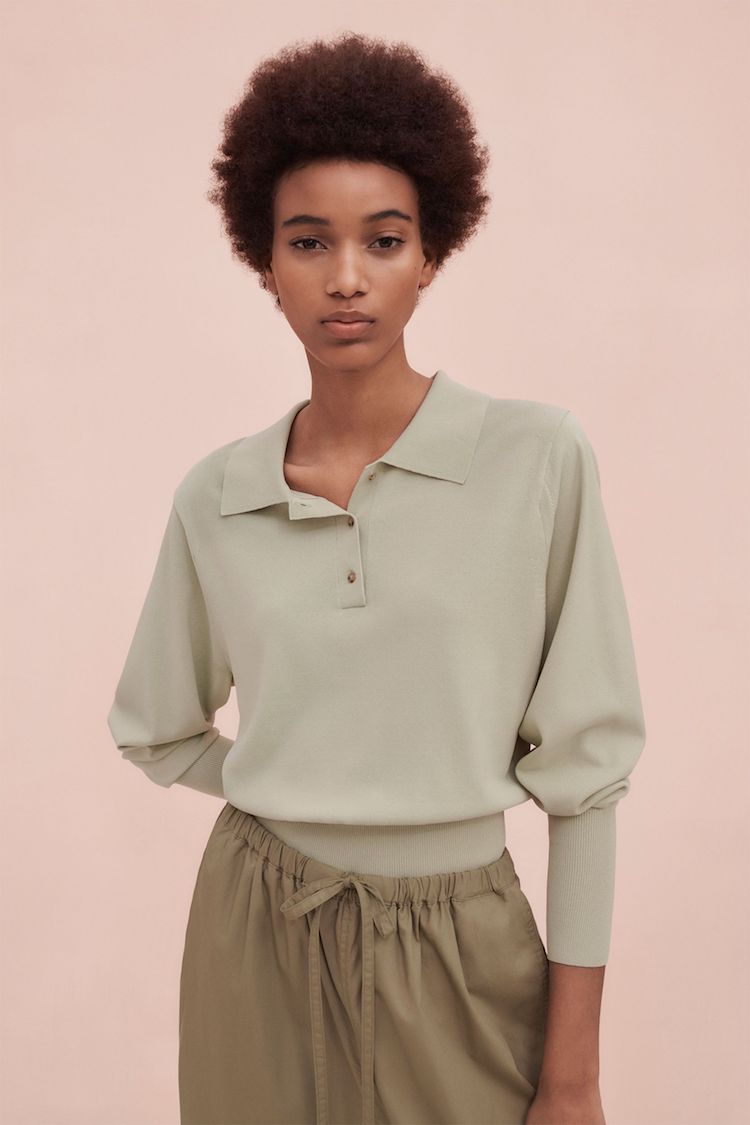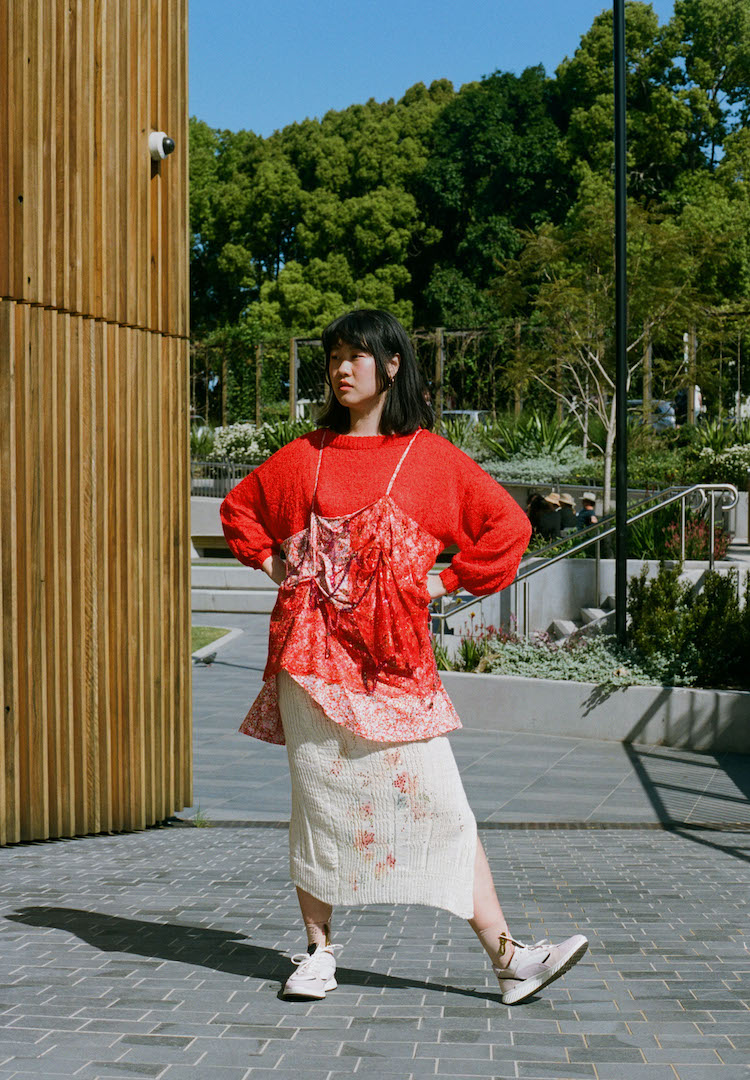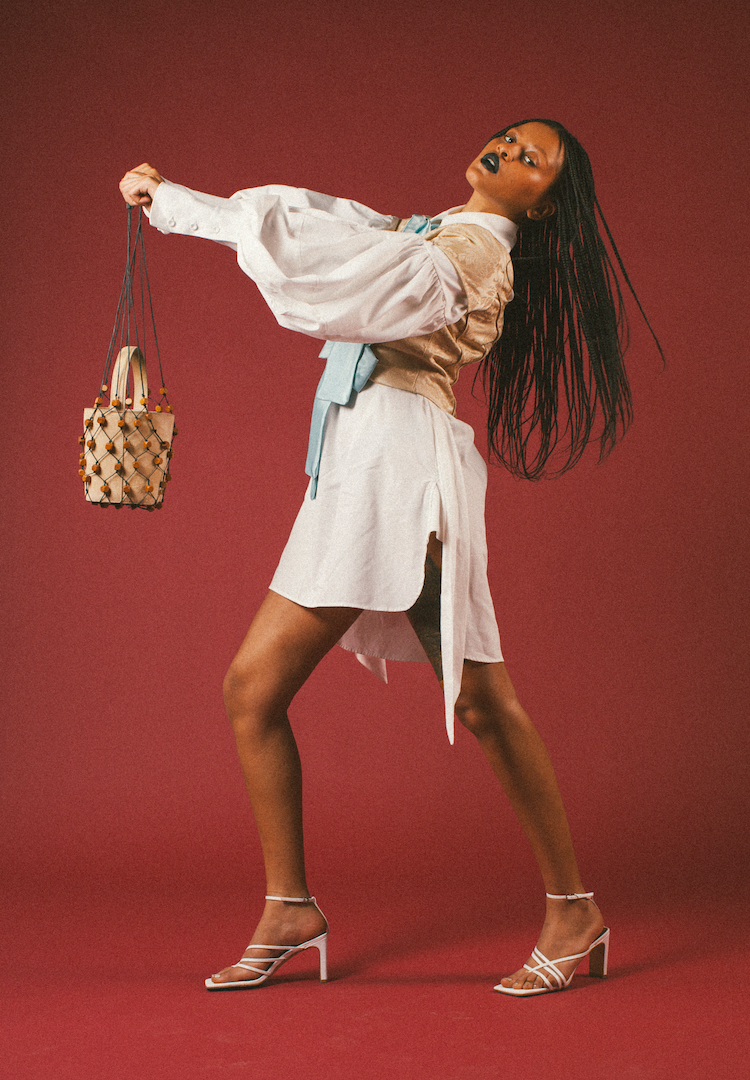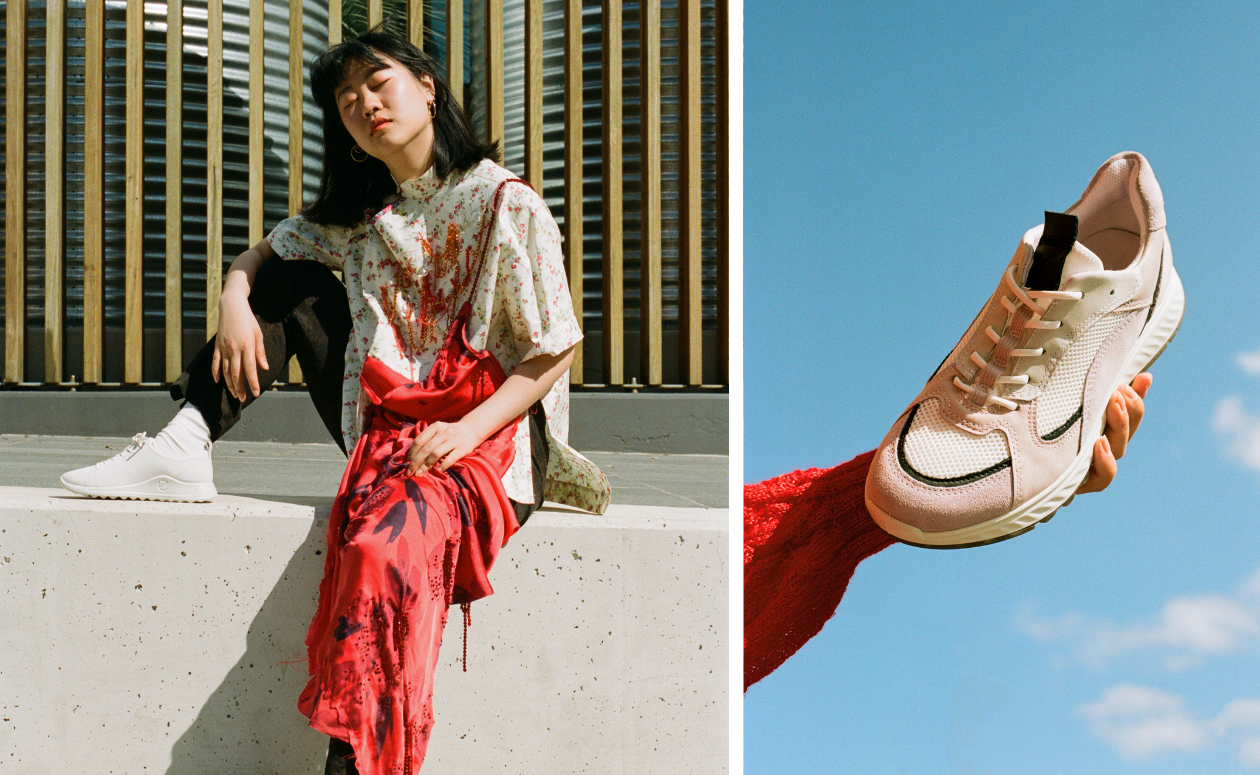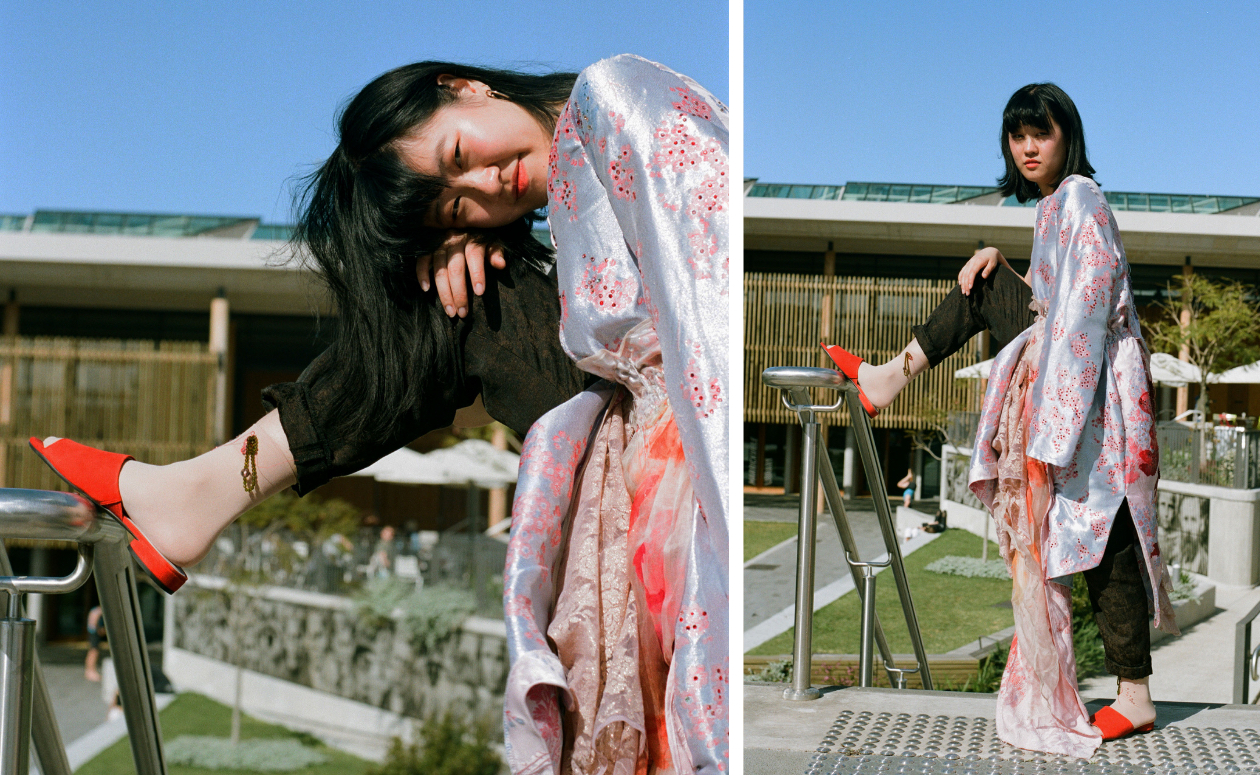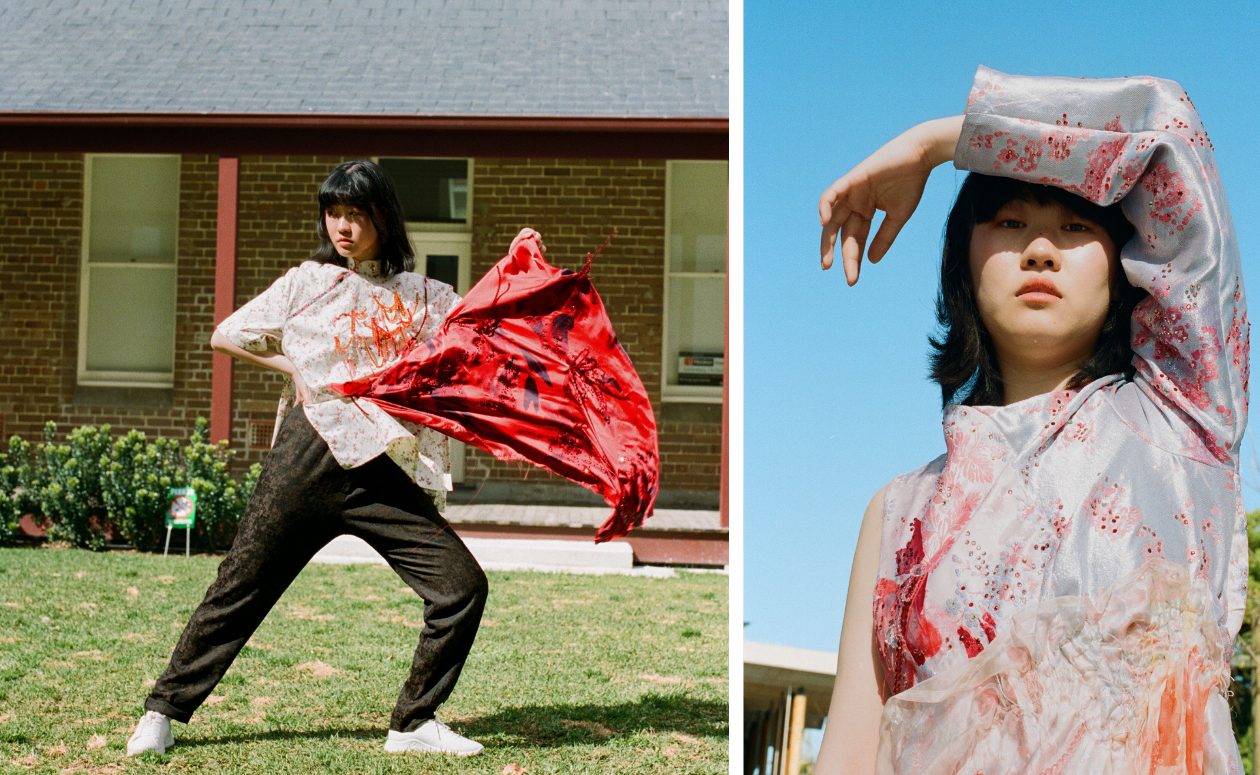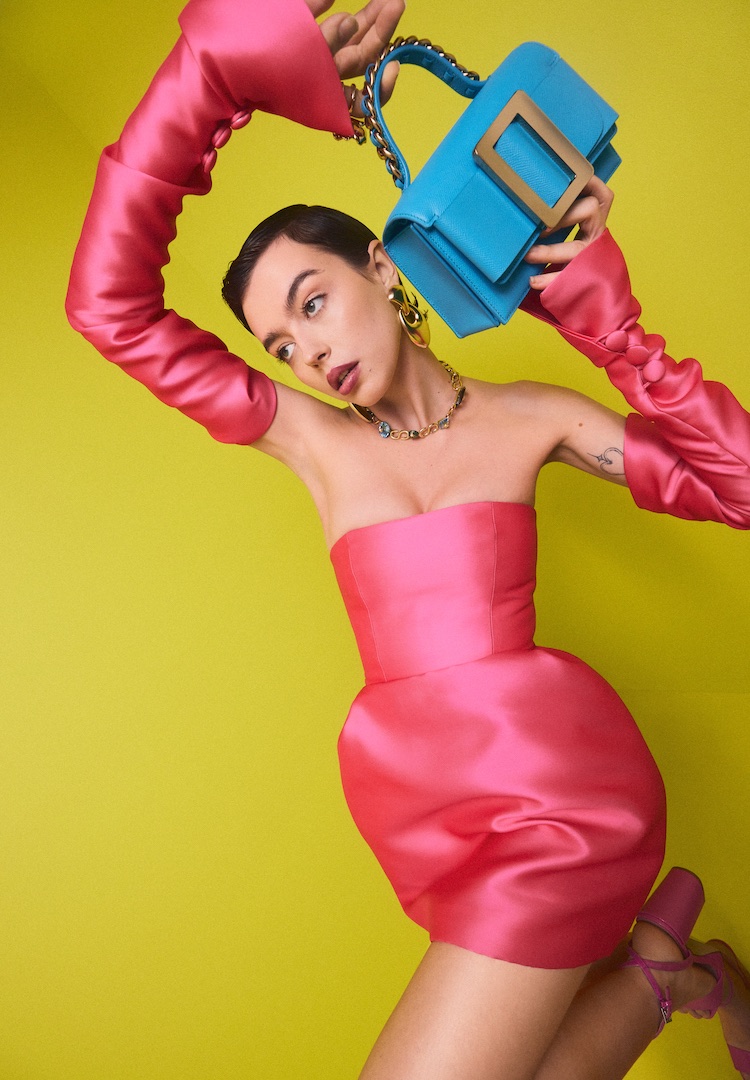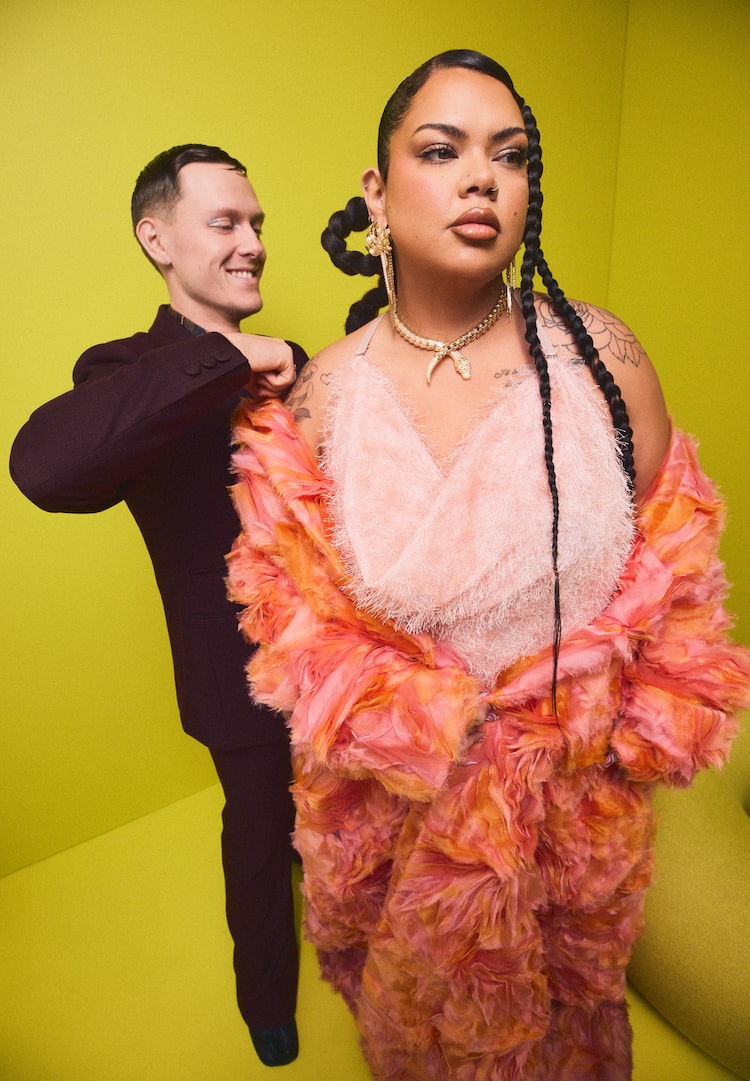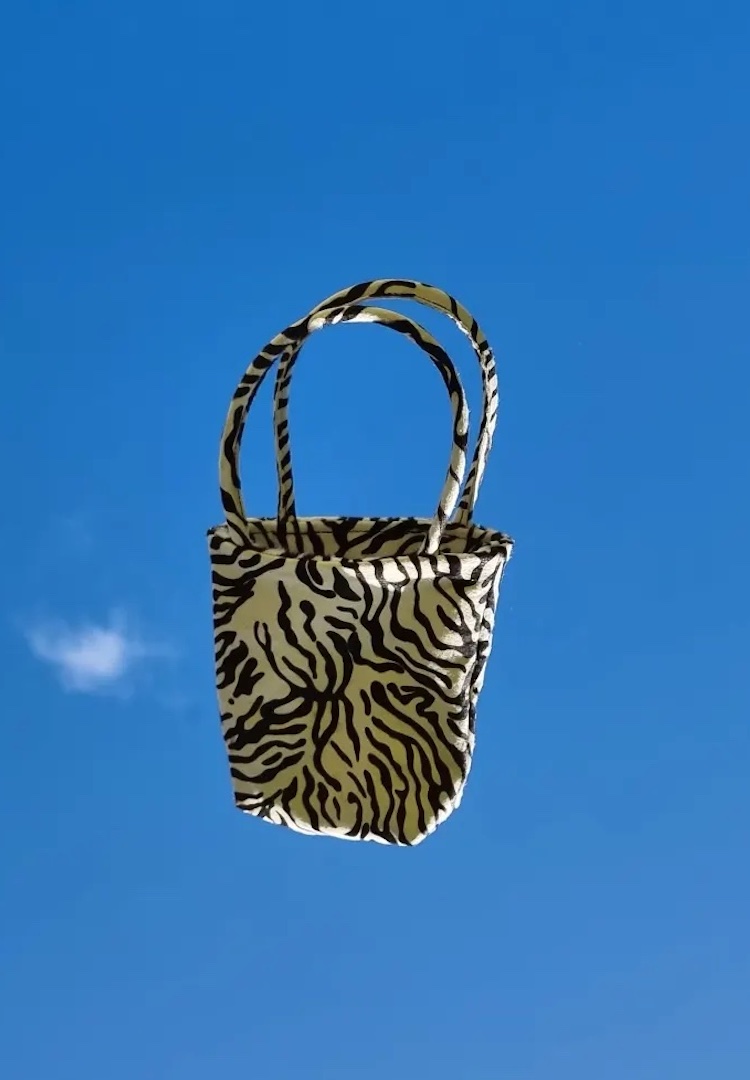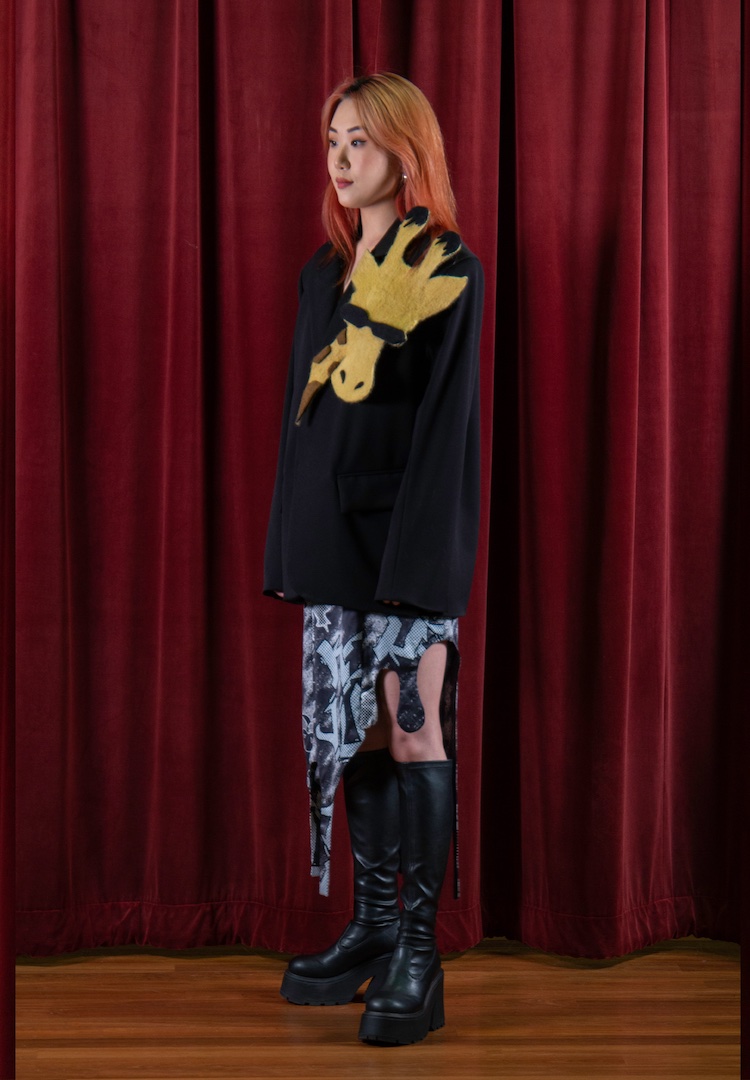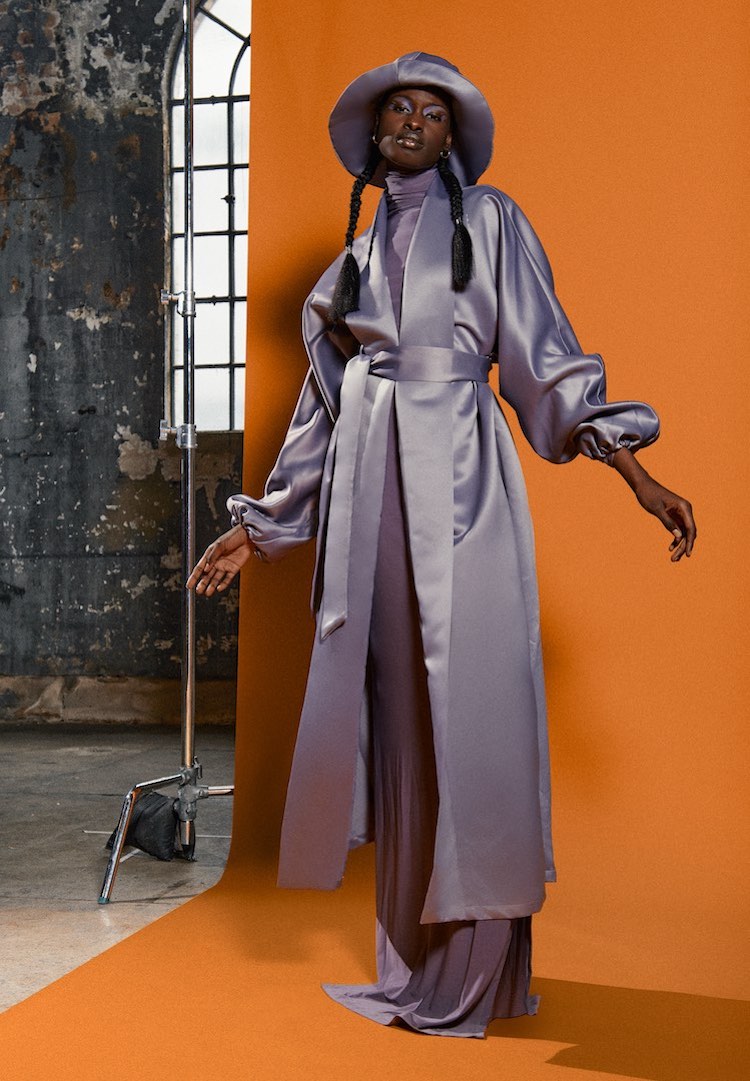This emerging Australian designer says the world doesn’t need more clothes but she’s still betting her career on fashion’s future
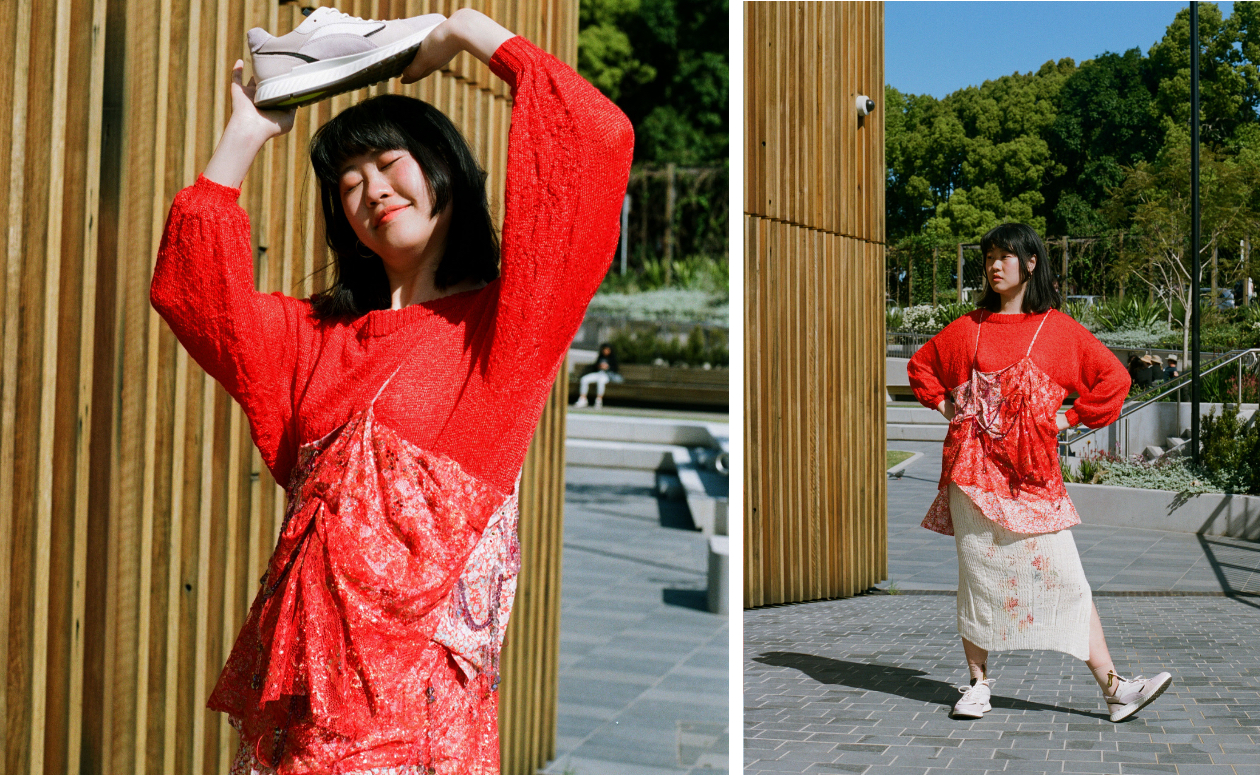
PHOTOGRAPHER – KAITLYN BOSNJAK
PHOTOGRAPHER’S ASSISTANT – GEORGIA DUNCAN
WORDS BY ELIZA SHOLLY
IN PARTNERSHIP WITH ECCO SHOES
Three fashion students forecast the future of their industry and the importance of innovation.
Sometimes it takes a pandemic to encourage extreme innovation. As COVID-19 has enveloped our lives over the past few months, weeks and days, plenty has changed. Everything from our toilet paper consumption to the way we dress has begun to inform what the world may look like at the end of this.
It’s no secret that the future of design requires radical thinking. Special attention must be paid to mindfulness at every stage, with considerations paid to quality materials, ethical production, longevity, durability and wearability. It calls for a merging of timelessness and innovation, paired with new ideas and of course, fresh talent. These are the principles that govern ECCO shoes, a heritage brand known for creating high quality footwear.
Universities are a great place to start when considering the future of any industry. Within fashion, the unbridled creativity and macro thinking of students can grant insight into what the future of our clothing may hold. As in-person classes have been cancelled, workshops vacated and students forced to sew from home, many have wondered what the future may hold for a subject so tactile and tangible.
Across this new series, we meet Eve Gibney, Samantha Klein and Andriana Fu – two current fashion students and a recent graduate who have been forced to pivot and innovate through their designs. In collaboration with ECCO, we asked them to integrate their own designs with their post-pandemic personal style. Here is how they’re processing their lives now, intertwined with some other rather insightful musings.
Introducing Andriana
Andriana Fu’s collection, Nostalgic with Soft Knees, tells the story of her father and his time spent as a figure skater during the Chinese Cultural Revolution. Launched in 1966 by Communist leader Mao Zedong, the time of socio-political unrest isolated the country from the rest of the world. Her collection is a visceral approach to exploring cultural and physical tensions within the body, as well as love for one’s migrant roots.
How would you describe your design aesthetic?
I’d say it’s very whimsical, and a bit nostalgic. It’s also quite influenced by my background. I was born in Australia but my ethnic background is Chinese so I really take pride in that and try to feed it through my work.
What motivated you to consider a career in design?
I think it was just always there. I didn’t really think that deeply about it. I knew I loved drawing and I loved being creative, so it became my goal. When I did my honours collection, all the things that I had done in my life up until that point just came together. It just kind of happened quite sporadically.
How do you reflect on your collection?
I do think fashion is really [an] amazing narrative too for storytelling and speaking about larger things. Contextualising them. While personally, I still feel like I could do more with it, it still says so much about a particular time in my life.
It was inspired by my father who was a figure skater during the cultural revolution. China was closed off from the world, and going through a really big period of reformation and a very politically intense time.
We share a cross-cultural bond through him teaching me ice skating here in Australia. The whole collection is based on very visceral memories, about the joy we share from this shared experience. He taught me when I was young, so that experience is something very unique to my circumstance. Allowing that to inform my design aesthetic was extremely interesting.
How do you integrate innovation?
I think the way I design is very playful. I’m not sure if innovation is at the forefront of my mind, but I have all these elements that I’m layering and experimenting with; it’s very visceral and sporadic. In that way, I think I can get to something more fresh and authentic. Even the idea of not planning is innovative. A lot of the textiles in my collection were intentionally erratic. It’s how I approach drawing, building up a lot of layers like you would in a painting or sketch.
How do you see your future as a designer evolving?
Before this year it was very straightforward. I was planning to do my masters, enter the industry, and hopefully work overseas. Now that 2020 has happened, I have been really considering what kind of fashion the world needs. There are so many issues – sustainability, capitalism – that have led me to be more open to pivoting. That could be by way of a fashion design career, or working in different parts of content creation. I’d love to be a bit more well-rounded and flexible.
To be honest, I don’t even know if the world needs more clothes. Maybe it’s even about going to look at deadstock materials and reforming things, rather than designing something that is completely new.
Do you find that ethical line hard to toe?
Definitely. My fashion education is a bit of a privilege at the moment. I’m very lucky that I can study fashion. There are just a lot of social issues that are tied to the industry, so I’m consistently navigating my own personal responsibility.
What do you see as the biggest issue facing the industry today?
Empathy, for me, is a big thing. Shopping and consuming ethically is definitely a privilege in itself. Not everyone has the means to spend more money in order to better society.
Design has a responsibility to integrate [ethical considerations] into its structures and output. It feels like the industry needs a big cultural reform, which is a big task. When we do hopefully emerge out of this year, I’d love to somehow contribute to that change.

